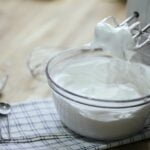FREE SHIPPING OVER $50
Ozempic SHOCKER: Forget “Face” – Experts Warn of a New, Hidden Danger Called “Ozempic Mouth”!
If you’ve been following the latest health trends, you’ve probably heard about Ozempic (and other GLP-1 medications like Wegovy and Mounjaro). These drugs have taken the world by storm, offering significant weight loss for many people. But with their soaring popularity, we’re also starting to see more and more discussion about potential side effects. You might already know about “Ozempic Face” – the sagging, gaunt look some users experience as they lose facial fat.
However, here’s an Ozempic shocker that’s far less talked about, and frankly, a lot more concerning for your long-term health: Dental and medical professionals are now warning of a new, hidden danger being dubbed “Ozempic Mouth.”

Beyond the Weight Loss: Understanding GLP-1 Medications
First, let’s quickly recap what these medications are and why they’re so popular. Ozempic (semaglutide), Wegovy (also semaglutide), and Mounjaro (tirzepatide) belong to a class of drugs called GLP-1 receptor agonists. They work by mimicking a natural hormone in your body that:
- Slows down gastric emptying: Food stays in your stomach longer, making you feel fuller for longer.
- Reduces appetite: It signals your brain that you’re not hungry.
- Lowers blood sugar: It stimulates insulin release and reduces glucose production in the liver.
These effects lead to significant weight loss for many, and they’re also prescribed for type 2 diabetes management. However, like all powerful medications, they come with potential side effects. While nausea, vomiting, diarrhea, and constipation are commonly discussed, the focus is now shifting to less obvious, yet equally important, concerns.
The Unseen Threat: What Exactly is “Ozempic Mouth”?
“Ozempic Mouth” isn’t a formal medical diagnosis, but it’s a term gaining traction among dental professionals and patients to describe a cluster of oral health issues potentially linked to GLP-1 medications. While the exact mechanisms are still being fully understood through ongoing research, the anecdotal and clinical observations are striking.
The primary culprits behind Ozempic Mouth appear to be:
- Severe Dry Mouth (Xerostomia): This is perhaps the most common and significant issue. GLP-1 medications can reduce saliva production. Saliva is crucial for oral health – it washes away food particles, neutralizes acids, remineralizes tooth enamel, and contains enzymes that fight bacteria.
- Increased Risk of Cavities (Dental Caries): A direct consequence of dry mouth. Without sufficient saliva to protect your teeth, they become much more vulnerable to acid attacks from bacteria, leading to rapid decay.
- Gum Disease (Gingivitis and Periodontitis): Dry mouth and changes in oral pH can create an environment where harmful bacteria thrive, increasing the risk of inflammation, bleeding gums, and ultimately, severe gum disease that can lead to tooth loss.
- Bad Breath (Halitosis): Reduced saliva flow can lead to a buildup of bacteria and food particles in the mouth, causing persistent bad breath.
- Fungal Infections (Oral Thrush): A dry mouth environment can also make you more susceptible to opportunistic fungal infections.
- Esophageal Reflux/Heartburn: GLP-1s slow gastric emptying, which can lead to increased acid reflux. Stomach acid washing into the mouth can erode tooth enamel and irritate soft tissues.
This isn’t just about discomfort. Left unaddressed, these issues can lead to significant pain, costly dental procedures (fillings, root canals, extractions), and even systemic health problems, as oral health is intricately linked to overall well-being, including cardiovascular health and diabetes management. It’s a true hidden danger that requires attention.
Why Are Experts Warning About This Now? (The Mechanism Behind the Mouth Issues)
While more research is needed, experts are pointing to a few key mechanisms:
- Salivary Gland Suppression: GLP-1 receptors are found throughout the body, including in salivary glands. Activating these receptors may directly reduce saliva production.
- Dehydration: The appetite-suppressing and nausea-inducing effects of these drugs can lead to reduced fluid intake, contributing to overall dehydration and, consequently, dry mouth.
- Vomiting/Nausea: If a patient experiences frequent nausea or vomiting, the repeated exposure to stomach acid can erode tooth enamel, making teeth highly vulnerable to decay.
- Dietary Changes: While users often eat less, some might inadvertently consume more sugary foods or drinks if they experience cravings, further exacerbating cavity risk, especially with reduced saliva.
- Changes in Gut Microbiome (Indirectly): While not directly “mouth” related, changes in the gut microbiome due to dietary shifts or the drug’s effects could indirectly influence systemic inflammation, potentially impacting oral health.
Protecting Your Smile: What You Can Do About “Ozempic Mouth”
If you’re currently taking Ozempic or a similar GLP-1 medication, or considering it, don’t panic! Awareness is the first step to protection. Here’s what you can do to combat Ozempic Mouth and safeguard your oral health:
- Prioritize Hydration: This is paramount. Drink plenty of water throughout the day. Keep a water bottle handy and sip constantly. Consider sugar-free electrolyte drinks if you’re struggling with dehydration or nausea.
- Stimulate Saliva Flow:
- Chew sugar-free gum (with xylitol if possible, as it fights decay).
- Suck on sugar-free lozenges or candies.
- Talk to your dentist about over-the-counter or prescription artificial saliva products or oral rinses designed for dry mouth.
- Step Up Your Oral Hygiene Game:
- Brush at least twice a day with a fluoride toothpaste.
- Floss daily to remove plaque and food particles from between teeth.
- Consider a fluoride rinse for extra protection against cavities, especially if you have severe dry mouth.
- Regular Dental Check-ups: Visit your dentist more frequently than usual – every 3-4 months might be advisable initially, instead of every 6 months. Your dentist can monitor for early signs of decay or gum disease and provide targeted preventative care. Inform them about your medication use.
- Manage Nausea and Vomiting: If you experience these side effects, rinse your mouth with water or a fluoride mouthwash immediately after an episode (don’t brush right away, as enamel can be soft after acid exposure). Discuss medication dosage adjustments with your doctor.
- Mind Your Diet: While you’re losing weight, still make smart food choices. Limit sugary drinks and acidic foods that can further erode enamel. Focus on whole, nutrient-dense foods.
- Humidify Your Environment: Using a humidifier, especially at night, can help reduce oral dryness.
Don’t Let a “Hidden Danger” Derail Your Health Journey
The emergence of “Ozempic Mouth” serves as a crucial reminder: every medication, no matter how effective, carries potential risks. While GLP-1 drugs offer significant benefits for weight loss and diabetes management, it’s essential to be fully informed about all possible side effects, even the less obvious ones.
By understanding Ozempic mouth, you empower yourself to make informed decisions and take proactive steps to protect your oral health. Don’t let a hidden danger undermine your journey to a healthier, happier life. Prioritize your dental care as diligently as you do your weight loss, and you can truly thrive!
Related Articles
- URGENT WARNING: Stop Using THIS Mouthwash Now to Slash Your Bowel Cancer Risk (Surgeon’s Shocking Discovery)
- Think Your Toothpaste is Safe? The Shocking Ingredient You’re Brushing With Daily
- I Avoided the Dentist & Got a Celebrity Smile Using These Peroxide-Free Whitening Strips
- Dentists Hate This: 8 Flossing Secrets They’ll Never Tell You (Number 5 Is Gross)
- Is Teeth Whitening Ruining Your Smile? The Truth You Need to Know







